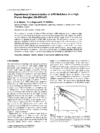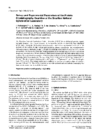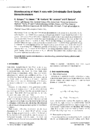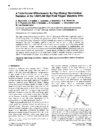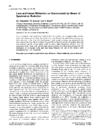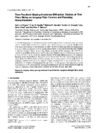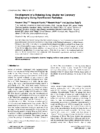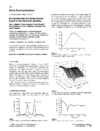issue contents
March 1998 issue

Cover illustration: The protein crystallography beamline of the Laboratorio Nacional de Luz Sincrotron (LNLS), see Polikarpov, Perles, de Oliveira, Oliva, Castellano, Garratt and Craievich, pages 72-76.
facility information
research papers
The measured performance of an undulator A insertion device at the Advanced Photon Source is presented, with particular attention to the high-energy X-ray range 50–200 keV.
The protein crystallography beamline at the Brazilian National Synchrotron Laboratory is described.
The theory of polychromatic focus broadening in bent-crystal focusing is given, and the design and testing of a microfocusing Laue monochromator for high-pressure diffraction experiments is described.
The high-resolution triple-crystal diffractometer at the High Energy Beamline at the European Synchrotron Radiation Facility is presented. The reciprocal space mapping is demonstrated at a layer of electrochemically etched macro pores in perfect silicon revealing diffraction satellites corresponding to the modulation.
The triple-crystal diffractometer installed at HASYLAB beamline BW5 with a high-field wiggler of critical energy 27 keV for DORIS III, operated at 4.5 GeV electron energy, is described.
The generation and utilization of several different diffraction effects (Laue spots, Kossel lines and diffuse scattering) caused by interaction of white synchrotron radiation with quasicrystals is described.
A multiple imaging-plate detector system and focusing mono- chromator have been developed and successfully employed at the Australian National Beamline Facility at the Photon Factory. The utility of the system has been demonstrated through the study of temperature-dependent phase transitions in LB films of metal fatty acids by grazing-incidence X-ray diffraction.
A new three-angle energy-dispersive diffractometer gives greatly improved time-resolved data collection: new results are obtained for cements hydrating at elevated temperatures and pressures, also indicating density changes with time.
A new XAS data-analysis program is described. It combines a graphical user interface with various numerical procedures for conventional XAFS analysis, energy-dispersive XAFS and time-resolved experiments.
A rotating X-ray shutter for coronary angiography has been developed. Performance tests using synchrotron radiation have verified that the shutter has satisfactory specifications for clinical applications.
An inexpensive system for micropositioning and tilting based on thermoelectric actuation is described.
notes and news
Free 



 journal menu
journal menu



















